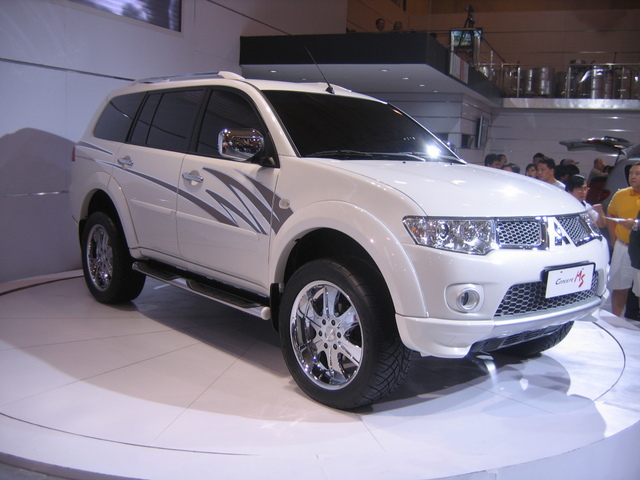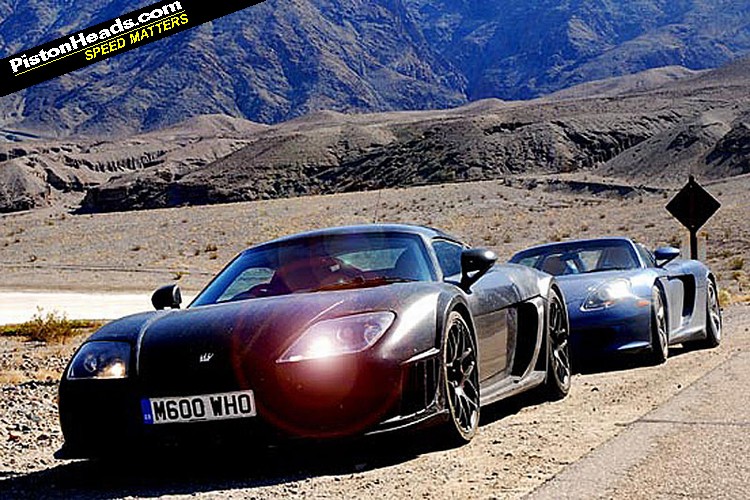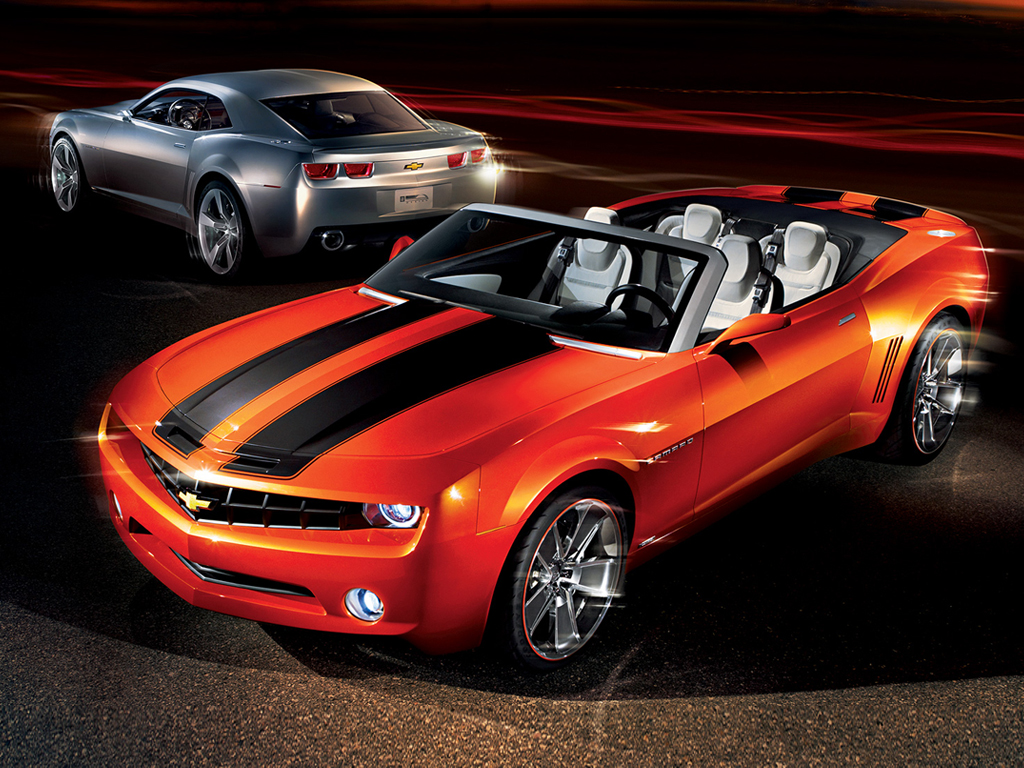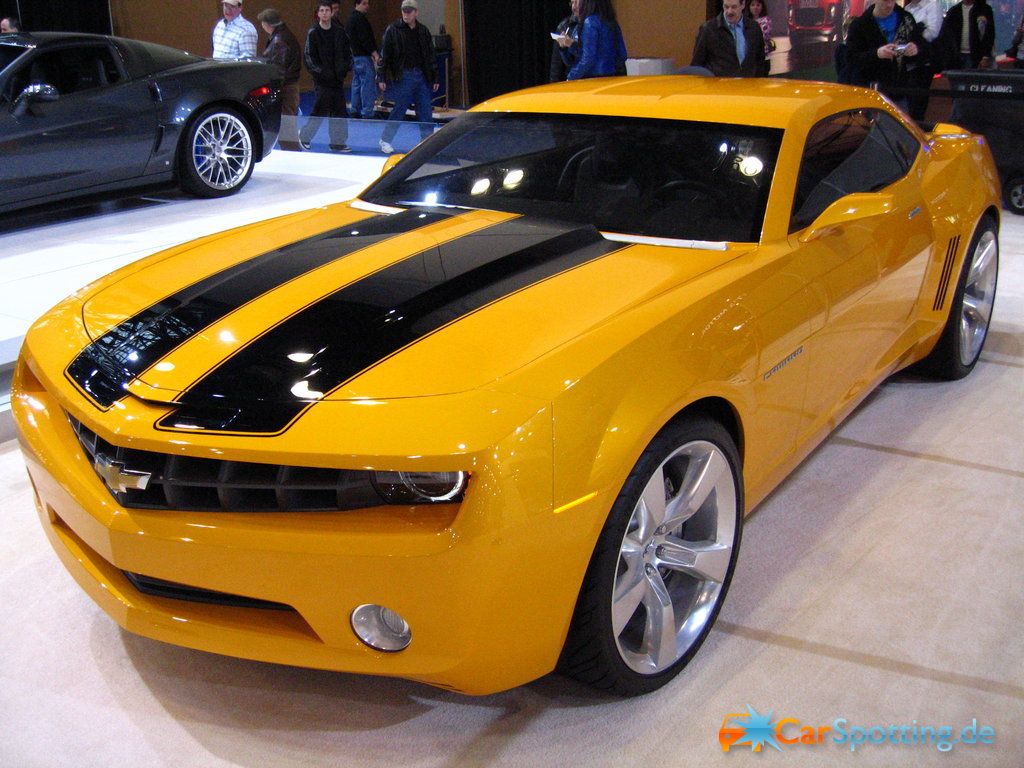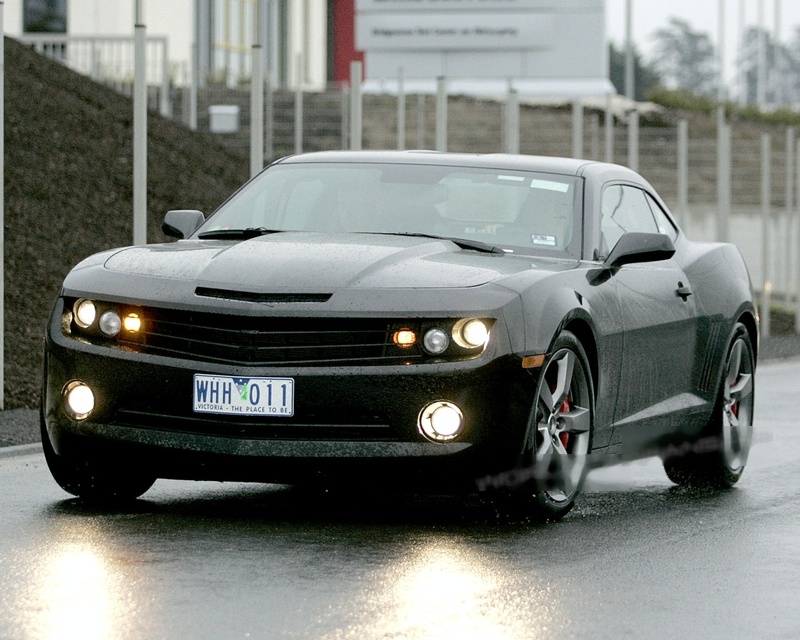
The Jeep Grand Cherokee is a mid-size SUV produced by the Jeep division of Chrysler. The Grand Cherokee's origins date back to 1983 when American Motors (AMC) engineers were designing a successor to the smaller Jeep Cherokee (XJ). Three outside (non-AMC) designers—Larry Shinoda, Adam Clenet, and Giorgetto Giugiaro—were under contract with AMC to create and build a clay model of the Cherokee replacement, then known as the "XJC" project. However, the basic design for the Cherokee's replacement was well under way by AMC's in-house designers and the 1989 Jeep Concept 1 show car foretold the basic design. The Grand Cherokee was the first Chrysler-badged Jeep product. Development work for the new model continued and Chrysler employees (after the 1987 buyout of AMC) were eager for a late-1980s release date; however, CEO Lee Iacocca was pushing for redesigned Chrysler minivans, thus delaying the Grand Cherokee's release until late 1992 as an Explorer competitor. Unlike the Explorer, the Grand Cherokee utilized monocoque (unibody) construction, whereas the Explorer was a derivative of the Ranger pickup with a separate body-on-frame.

The Grand Cherokee debuted in grand fashion at the January 1992 North American International Auto Show in Detroit, Michigan. Then Chrysler president Robert Lutz drove Detroit mayor, Coleman Young, up the steps of Cobo Hall and through a plate glass window to show off the new vehicle. Sales of the 1993 model year Grand Cherokee began in April 1992. Production of the Grand Cherokee started shortly afterward in the purpose-built Jefferson North Assembly in Detroit, Michigan, United States. European Grand Cherokees are manufactured in Austria by Magna Steyr. The redesigned WJ 1999 Grand Cherokee shared just 127 parts with its predecessor (mostly fasteners). The spare tire was relocated from the side of the cargo compartment to under the floor. The two heavy pushrod V8 engines were replaced by Chrysler's then-new PowerTech. This engine produced less torque than the V8s but was lighter, offered better fuel economy, and provided similar on road performance figures (the 23-gallon fuel tank was replaced with one of a 20.5-gallon capacity). The Inline 6 engine was also updated in 1999. A redesign of the intake manifold added 10 horsepower (7.5 kW). While other Jeep vehicles used the Mopar 5 x 4.5 bolt circle, this was the first Jeep following the 1987 Chrysler buyout to receive a wider bolt pattern:nbsp;– 5 x 5.

A notable feature available in this generation was the automatic four wheel drive option called Quadra-Drive, which employed the New Venture Gear NV247 transfer case. This two-speed chain-driven transfer case uses a gerotor, a clutch pack coupled to a hydraulic pump, to transfer torque between the front and rear axles. The transfer case contains three modes, 4-All Time, Neutral, and 4-Lo. In 4-All Time, 100% of torque is sent to the rear axle in normal conditions. If the rear axle starts spinning at a higher rate than the front axle, hydraulic pressure builds up in the gerotor and causes the clutch pack to progressively transfer torque to the front axle until both axles return to the same speed. Neutral mode is intended for towing the vehicle. In 4-Lo, the front and rear axles are locked together through a 2.72 reduction gear ratio. The NV247 transfer case is mated to front and rear axles containing Jeep's Vari-Lok differentials. Vari-Lok differentials also use a gerotor to transfer torque between the wheels on either side of the axle. The major advantage of Quadra-Drive was that it could automatically control traction between all four wheels. It had the disadvantage that the differentials were only limited slip and depended on wheel speed difference to apply the slip-limiting clutches; only the center differential could be locked, and then only in 4Lo. The Quadra-Trac II system included the NV247 transfer case with the standard open front and rear differentials.

The 45RFE and 545RFE automatic transmission in the WJ was notable. It included three planetary gear sets rather than the two normally used in a four-speed automatic. This gave it six theoretical speeds, and it would have been the first six-speed transmission ever produced in volume, but it was programmed to only use five of these ratios. Four were used for upshifts, with a different second gear for downshifts. Although five of the six ratios were used, Chrysler decided to call it a "4-speed automatic". In 2001, the programming was changed to make use of all six ratios. Rather than have six forward gears, the transmission was programmed to act as a five-speed with the alternate second gear for downshifts. The RPM at 70 miles per hour (110 km/h) on a 545RFE is 2000 rpm, 200 rpm less than the 45RFE programming. 1999 and 2000 model year WJ owners can have their 45RFE transmission's programming flashed to enable the extra gear as both transmissions are physically the same. The 42RE 4-speed automatic remained the transmission for the Inline 6 engine. It had slight changes from the previous model Grand Cherokee.

The interior was also completely redesigned in 1999. The redesign allowed for larger rear doors, and more space for rear passengers. Controls for various items like headlights, heated seats, and rear wiper were moved to more convenient locations. The electronic Vehicle Information center was moved from below the radio to above the windshield, and was standard on all 2000 and up models. Limited models included automatic dual-zone climate control. A 10 CD-Changer was also available with the Infinity Audio package. In addition to Jeep's UniFrame construction, Daimler Chrysler partnered with Porsche to further strengthen the frame. This was done to reduce NVH. UniFrame is an unusual construction scheme, it incorporates all of the strength and durability of a body-on-frame construction into a unitized construction. By adding stiffness and rigidity to the structure, they enhanced the ride and strengthened the network of steel beams, rails and pillars (or "safety cage") that surround and protect occupants. More than 70 percent of the underbody is high-strength steel. All Jeep Grand Cherokees feature UniFrame construction. The Grand Cherokee received a minor facelift for 2004 including round fog lamps, a lower front fascia and a new body-color matched inset grille design.

These specialty models appeared for a brief time, The Sport was slightly more equipped than the Laredo and offered a very discrete two-tone black trim interior for style. The Special Edition was introduced, priced between the Laredo and Limited, offering the same quality of the Limited, differences include the option of the 4.7 L V8 engine. The Special Edition uses the Qudra-Trac II drivetrain, which utilizes the same NV247 transfer case as the limited edition, but lacks Quadra-Drive's front and rear Vari-Lok differentials. Special Edition came with premium interior details (Instrument cluster graphics were shared with Laredo model, did not acquire white-faced gauges from Limited model), Plush Leather seats, AM-FM, In-Dash CD/Cassette along with ten-disc CD changer stowed in a well thought location in within cargo space. Special Edition Trim package from bumper to bumper was presented with a fully polished, non-textured finish. Front grille was standard issue on the Special Edition. The Overland (appropriated after the former Jeep parent, Willys-Overland) was the top-of-the-line alongside the Limited the 4.7 L High Output engine V8 debuted as the standard motor. Alongside a wealth of standard features such as plusher interior trim with "Overland" badging, mid-2003 came a revised strong black two-tone trim interior. Front and side-curtain airbags, an Infinity sound system with 10-disc changer, heated/power front seats, integrated rock rails, power sunroof, wood/leather steering wheel and 17-inch alloy wheels were also standard. The Columbia Edition offered the usual features of the other specialty models besides a strong unique two-tone interior with "Columbia Sportswear" badging, with the 4.7 L H.O. engine and GPS optional. The Freedom Edition was a modified Laredo model. Features include special badging, painted charcoal rock rails, charcoal lower-body cladding and front/rear fascias, charcoal painted wheels, silver interior accents, and optional leather seats.

Beijing Jeep Corporation, Ltd. had been producing the XJ classic Cherokee since 1984, and in 2004 they bought the old tooling for the WJ Grand Cherokee when the WK was introduced for the USA as a 2005 model. After some tooling up time, the WJ was introduced in 2006 for the Chinese market as the Jeep 4000 and 4700 Grand Cherokee (for the 4.0 I-6 and 4.7 V8, inc. HO, models respectively). It was their flagship model and nearly identical to the 2004 Grand Cherokee Limited in looks and equipment, including the solid axle suspension, choice of 4wd systems, body color cladding, alloy wheels, Chrysler sound systems, and Chrysler automatic climate controls. This is unlike the XJ Cherokee that was significantly modified by Beijing Jeep for the Chinese market. As of 2010, the current model is sold in China. The all-new WK Grand Cherokee debuted in 2004 for the 2005 model year. Features available for the first time in a Jeep included Quadra-Drive II four-wheel drive, rear-seat DVD player and optional 5.7 L Hemi V8. The 3.7 L V6 engine replaced the 4.0 L Straight-6. The design still emphasizes power and luxury, with significant work done on improving noise, vibration, and harshness (NVH). However, for the first time, Jeep also emphasized on-road performance to a similar extent as the cornerstone of its brand, off-road capability.

This newfound emphasis on on-road refinement led Jeep to replace the live-axle with leading-arms front suspension (found in the ZJ and WJ) with a new design: an independent double-wishbone setup like that which debuted in the 2002 Liberty. The new Jeep changed its philosophy due to what it perceived as increasing demand in the SUV marketplace for on-road performance and decreasing demand for off-road capability. The 2007 Jeep Grand Cherokee made its European debut at the Euro Camp Jeep held in Ardèche, France. The Grand Cherokee received a minor facelift for 2008. The bottom part of the headlights became rounded, and the lower portion of the front bumper became removable to increase the approach angle for off-road use. The 4.7 L was refined, now producing 305 hp (227 kW; 309 PS), and 334 lb·ft (453 N·m). The 2009 Jeep Grand Cherokee is available with an improved 5.7 L Hemi engine rated at 357 hp (266 kW; 362 PS) and 389 ft·lbf (527 N·m) of torque. The engine uses variable valve timing to increase fuel economy.
 The Peugeot 207 is a supermini produced by the French automaker Peugeot and unveiled in January 2006. According to JATO Dynamics, an automative market researcher, the model was the bestselling car in Europe in 2007. The 207 was launched in France, Spain and Italy during April 2006 and later on in other European, Israeli and Arabic markets. The UK launch was on 8 June 2006. Amicus and the TGWU, both unions representing workers at PSA's UK manufacturing plant in Ryton, Coventry, chose the same day to launch a campaign calling for the boycott of PSA's Peugeot and Citroën vehicles in the UK. The campaign was in protest against the company's plans to close the Ryton plant. Despite the boycott the sales of Peugeot in UK grew. Not to be confused with the 207 in the Brazilian market. That model is essentially a 206+ sold in some European markets.
The Peugeot 207 is a supermini produced by the French automaker Peugeot and unveiled in January 2006. According to JATO Dynamics, an automative market researcher, the model was the bestselling car in Europe in 2007. The 207 was launched in France, Spain and Italy during April 2006 and later on in other European, Israeli and Arabic markets. The UK launch was on 8 June 2006. Amicus and the TGWU, both unions representing workers at PSA's UK manufacturing plant in Ryton, Coventry, chose the same day to launch a campaign calling for the boycott of PSA's Peugeot and Citroën vehicles in the UK. The campaign was in protest against the company's plans to close the Ryton plant. Despite the boycott the sales of Peugeot in UK grew. Not to be confused with the 207 in the Brazilian market. That model is essentially a 206+ sold in some European markets. The 207 is the successor to the 206. The 207 is based on a modified version of the platform used for the Citroën C3, and is built in Poissy and a new plant near Trnava, Slovakia. Initially three petrol engines were available: 1.4-litre 8v with 75 or 16v 90 hp (67 kW) and 1.6-litre 16v with 110 bhp (82 kW; 112 PS). From late 2006, the 1.4 & 1.6 16v models were replaced by the new 1.4 vti 95 bhp (71 kW; 96 PS) and 1.6 vti a 120 bhp (89 kW; 122 PS) Valvetronic engines. Two turbocharged versions, one with 150 bhp (112 kW; 152 PS) , and the other with 175 bhp (130 kW; 177 PS) were also added to the range. The latter four engines result from the cooperation agreement between PSA and the BMW group. The diesel-powered engines available are a 1.4 litre 70 hp (52 kW) or a 1.6 litre HDi with maximum output of 90 or 110 hp (82 kW), the latter with the addition of an intercooler. The 207 is available as a three- or five-door hatchback, a 207 SW Station Wagon and a 207 CC coupé convertible. A GTI version is available with the 175 hp (130 kW) turbocharged 1.6 litre engine. It has sold well in Britain, being the sixth best selling car overall (and third in the supermini sector) in 2007 with more than 67,000 examples being sold.
The 207 is the successor to the 206. The 207 is based on a modified version of the platform used for the Citroën C3, and is built in Poissy and a new plant near Trnava, Slovakia. Initially three petrol engines were available: 1.4-litre 8v with 75 or 16v 90 hp (67 kW) and 1.6-litre 16v with 110 bhp (82 kW; 112 PS). From late 2006, the 1.4 & 1.6 16v models were replaced by the new 1.4 vti 95 bhp (71 kW; 96 PS) and 1.6 vti a 120 bhp (89 kW; 122 PS) Valvetronic engines. Two turbocharged versions, one with 150 bhp (112 kW; 152 PS) , and the other with 175 bhp (130 kW; 177 PS) were also added to the range. The latter four engines result from the cooperation agreement between PSA and the BMW group. The diesel-powered engines available are a 1.4 litre 70 hp (52 kW) or a 1.6 litre HDi with maximum output of 90 or 110 hp (82 kW), the latter with the addition of an intercooler. The 207 is available as a three- or five-door hatchback, a 207 SW Station Wagon and a 207 CC coupé convertible. A GTI version is available with the 175 hp (130 kW) turbocharged 1.6 litre engine. It has sold well in Britain, being the sixth best selling car overall (and third in the supermini sector) in 2007 with more than 67,000 examples being sold. Elegant Peugeot 207 with white color
Elegant Peugeot 207 with white color Amazing Peugeot 207 design
Amazing Peugeot 207 design Cool Peugeot 207 with shiny black color
Cool Peugeot 207 with shiny black color Peugeot 207 interior
Peugeot 207 interior Beautiful Peugeot 207 with shiny blue color
Beautiful Peugeot 207 with shiny blue color Cool Peugeot 207 design
Cool Peugeot 207 design








